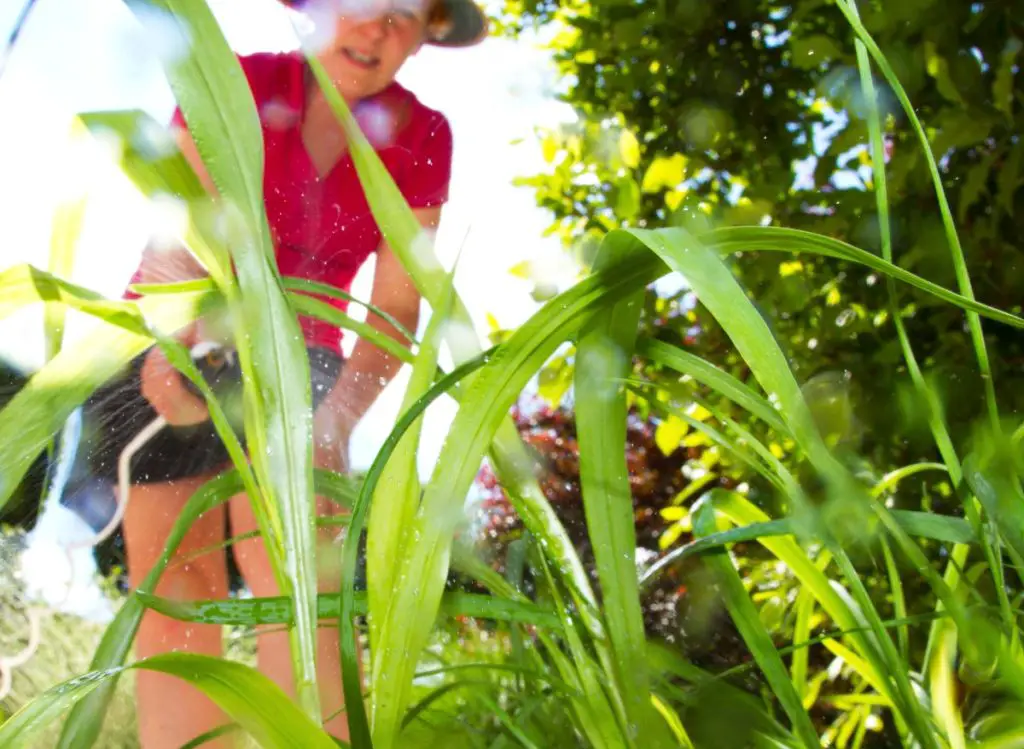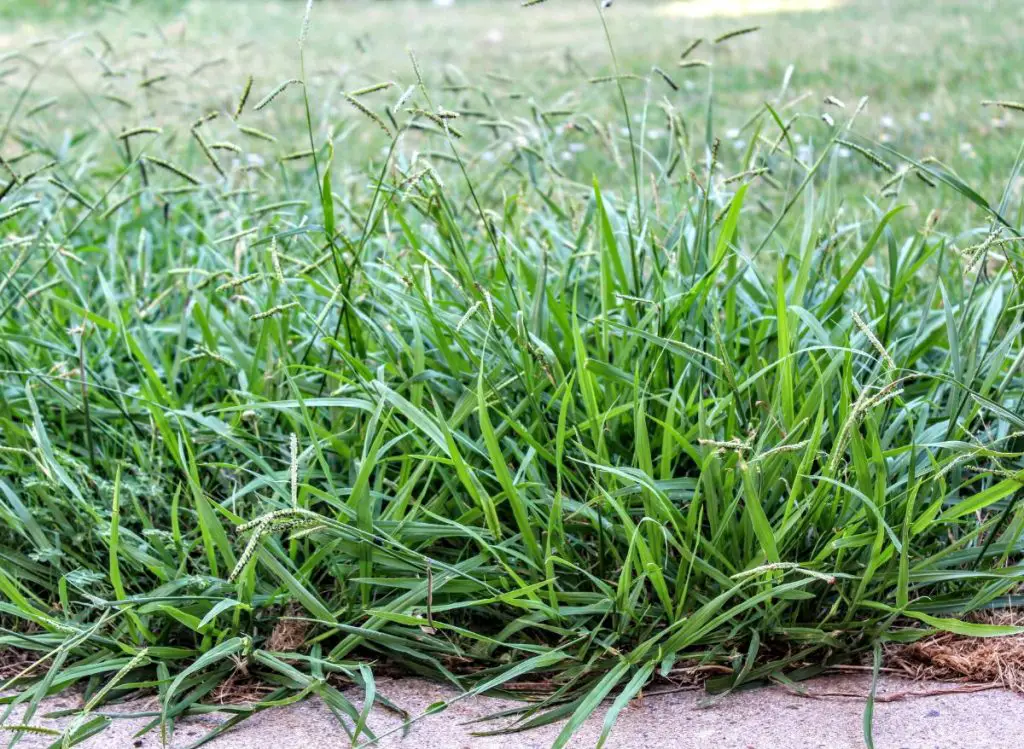
Crabgrass is a common nuisance that invades countless lawns every year. Its brisk growth and trailing stems make it difficult to control, and if left untreated, the crabgrass can suffocate healthy grass and can take over the entire area.
Fortunately, you do not need to resort to synthetic chemicals or hire expensive professionals to get rid of crabgrass. With a little effort, you can make an affordable homemade crabgrass killer that does not harm surrounding plants, humans, or pets.
Read on to find out how to make your homemade crabgrass killer using natural products that are easy to obtain. If you are looking for effective ways to get rid of clover, I wrote a whole article discussing how to get rid of clover faster.
1- Vinegar Solution
One of the most effective crabgrass killers is vinegar. Vinegar contains acetic acid, which is a potent herbicide that can wipe out a wide variety of weeds, including crabgrass.
To make your herbicide:
- Mix equal parts vinegar and water in a spray bottle and a few drops of dish soap.
- Add a spoonful of dish soap to help the solution stick to the leaves. The dish soap helps the solution stick to the plant’s surface, thus enhancing its effectiveness.
- Then, spray the solution directly onto the crabgrass and let it sit for a few hours. Ensure that you use a spray bottle to apply the solution to the weed, but avoid spraying it on nearby plants.
The acetic acid in the vinegar will dehydrate the leaves and kill the weed. Be careful not to accidentally spray the solution on any surrounding plants you want to keep!
If you wonder whether vinegar will kill Crabgrass, I wrote a whole article that I encourage you to read.
2- Homemade Borax-Based Weed Killer
Borax is a white powder that is commonly used as a laundry detergent. However, it can also be used as an effective crabgrass killer.
Generally, Borax acts as a desiccant, which means it dries out the plant cells, leading to its eventual death.
To make your homemade Borax weed killer:
- Mix 2 tablespoons of borax with a gallon of water.
- Add a few drops of dish soap and apply the solution using a spray bottle.
- This mixture can cause some yellowing to nearby plants, so it is advisable to dilute it adequately.
Remember that borax-based weed killer is nonselective, which means it will kill any vegetation it comes in contact with, including desirable plants.
3- Boiling Water
Boiling water is a simple and cost-effective natural weed killer that can be poured directly onto crabgrass roots to kill them off. However, boiling water might harm the surrounding plants and kills crabgrass instantly by scorching its roots.
It is recommended to add some salt to the water since it enhances the effectiveness of the boiling water by dehydration.
Boil a pot of water, add salt to it, and carefully pour it directly on the crabgrass. Boiling water can also be used to control any emerging crabgrass seedlings.
- Pour the boiling water over the crabgrass in the early morning or late evening to avoid damaging the surrounding grass.
- This should be repeated several times over a week or two until the crabgrass is completely eliminated.
4- Corn Gluten Meal
Corn gluten meal is a natural pre-emergent herbicide that prevents the germination of crabgrass seeds. Corn gluten meal is rich in organic matter that acts as a fertilizer for the soil, which promotes healthy plant growth.
Corn gluten meal should not be applied after crabgrass has already started growing. Make sure you apply before the weeds have germinated.
Corn Gluten Meal can effectively be a pre-emergent herbicide to control crabgrass and other lawn weeds (Source: The Spruce) However, the University of Maryland Extension does not recommend Corn gluten for weed control in lawns.
To kill crabgrass using corn gluten meal:
- Apply a layer of the meal on the soil after you have weeded the crabgrass.
- Ensure that you use the right amount, as too little may not be effective, while too much may prevent other desirable plants from emerging.
5- Baking Soda Mixture
Baking soda can also be an effective crabgrass killer, as it raises the pH level of the soil and creates an inhospitable environment for the weed.
To kill crabgrass using Baking Soda Mixture:
- Mix a tablespoon of baking soda with a gallon of water and pour it over the crabgrass.
- Be sure to avoid overspraying the mixture, as it may impact other plants in the area.
- Repeat the process several times over a few days until the crabgrass is fully gone.

6- Pulling the weed
Pulling the crabgrass out manually can still be an effective solution for smaller patches of crabgrass. Make sure you wet the soil before pulling the weed to loosen the roots.
Wetting the soil before pulling the weed can make the plant easier to pull up, and the moisture can make it more difficult for the crabgrass to grow back in the same spot.
What to read next:
- Is Sevin Insecticide Safe? Let’s unfold the truth!
- Can You Miss A Day When Watering A Grass Seed?
- Here’s How To Get Rid Of Cutworms (Simple yet handy hacks!)
- How To Get Rid Of Petty Spurge: Here’s How.
Wrapping Up
Combatting crabgrass infestations doesn’t have to be expensive or harmful. By using natural and homemade crabgrass killers, you can effectively remove crabgrass and ensure that your lawn stays healthy and happy.
The good news is that with homemade crabgrass killers, you can effectively control crabgrass without causing harm to other plants, pets, and humans. And, whether you choose vinegar, baking soda, boiling water, corn gluten meal, or manual pulling as your go-to solution, you will be sure to say goodbye to crabgrass for good.
Remember always to ensure that you take the necessary precautions, including wearing gloves and protective glasses, when handling these products and avoid spraying or applying them on desirable plants.

